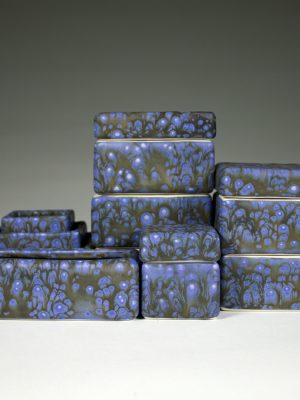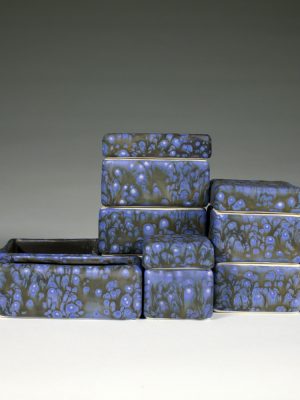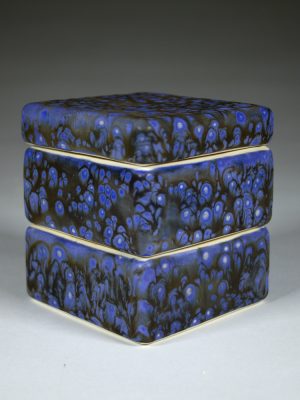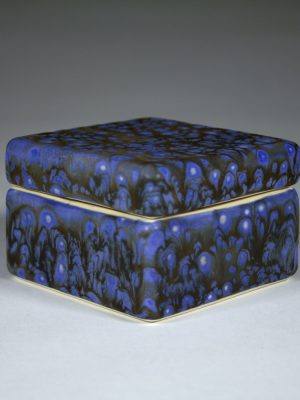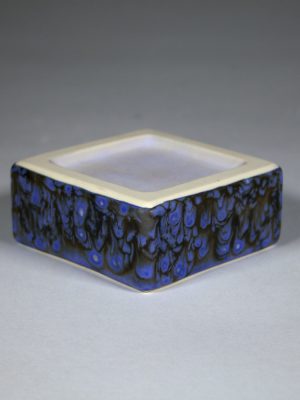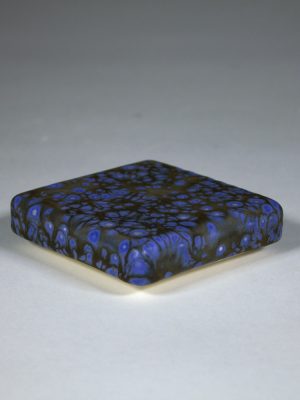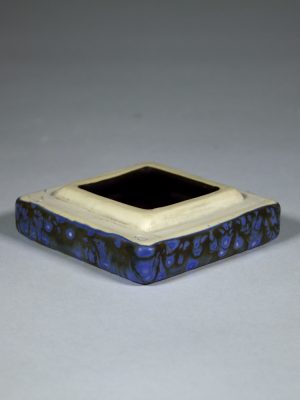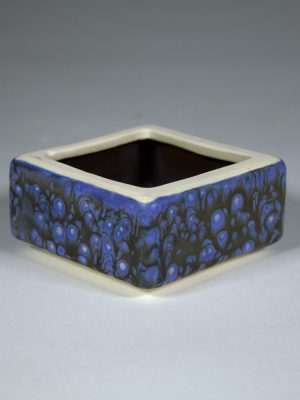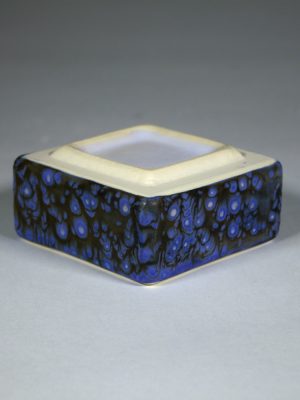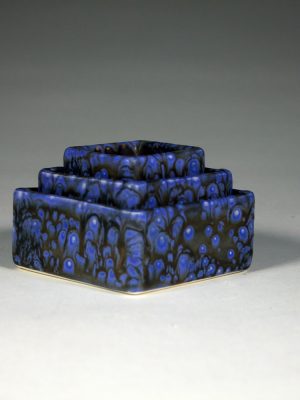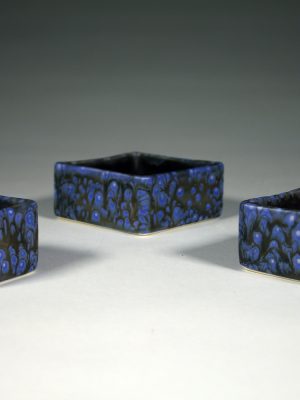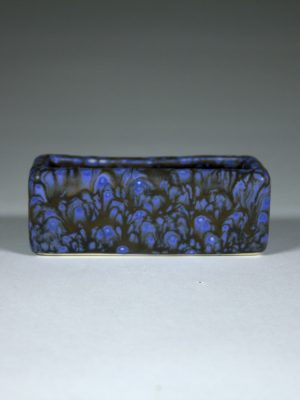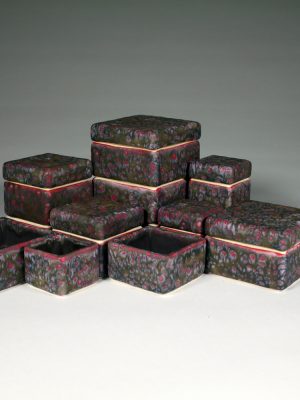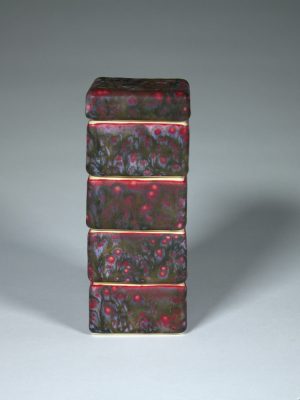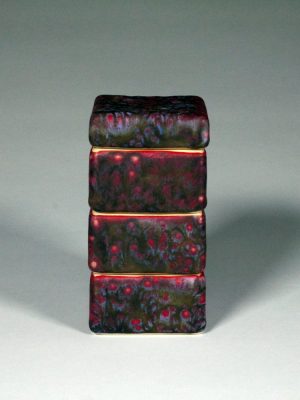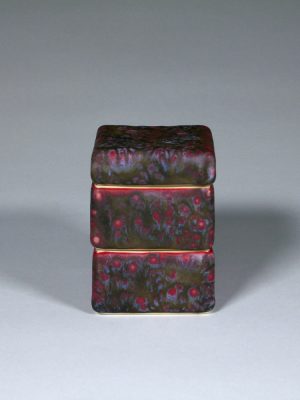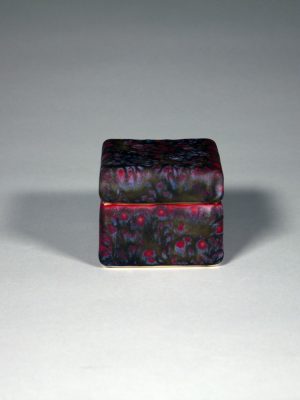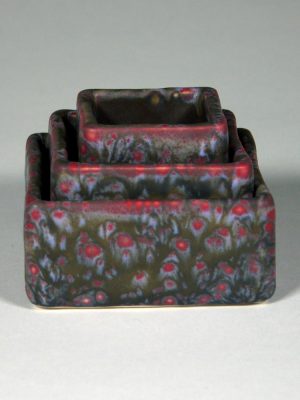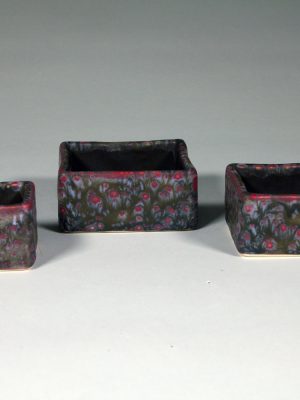The second round of stacking boxes fired without issue. Having the glaze stop further back made all the difference.
Rare earths, a group of elements on the atomic scale, have made the world of micro technology possible. They are separated from ores containing mixtures of the fifteen elements in their group. By incorporating the rare earth oxides of Neodymium and Erbium into the mix of glazes seen here, I am asserting that this work is of this time (the impetus for this set was after all to make a place to put those gadgets we all carry).
Neodymium Oxide colours the glaze on the bottoms of the base and stacking modules. Neodymium is used for the ceramic capacitors in micro processors. When used in glaze, it can be light sensitive. The glaze seen here can appear violet or blue depending on light conditions.
There is a layer containing Neodymium Oxide on the exterior of the blue set. Again, one’s perception of the colour can be influenced by light conditions.
The red set has a layer of glaze containing Erbium Oxide. It gives the pink halo around the red spots. Erbium is used in infrared lasers and fibre optic technology.
I am considering whether or not I want to cover up the unglazed porcelain where the parts meet. To flock or not to flock?
I set out a couple days ago to make some vase forms. Instead I found myself modelling a new generation of modules. It looks like there’s another round of mould making coming up.

